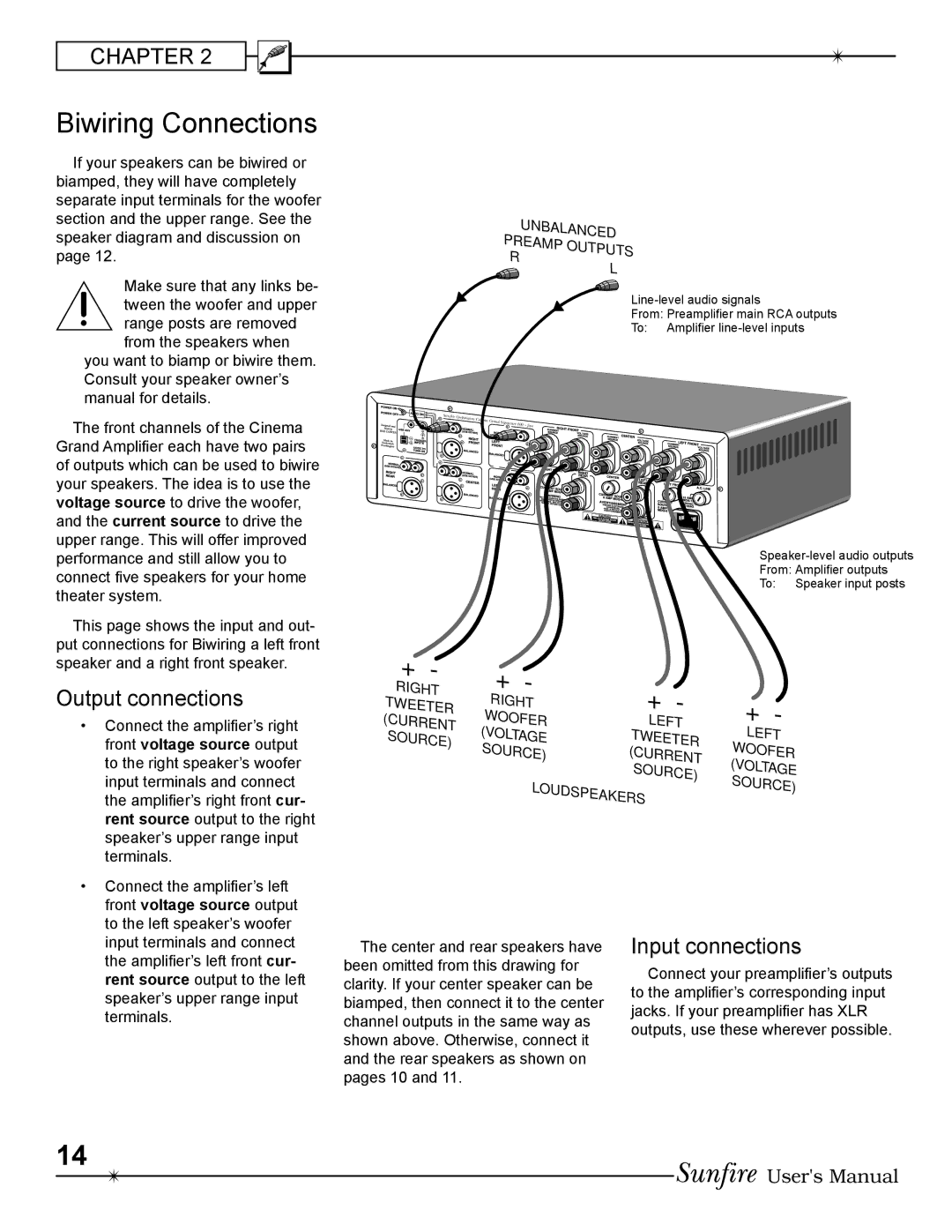200 ~ five, 400 ~ five specifications
The Sunfire 400 is a high-performance audio amplifier that has garnered attention for its remarkable features, advanced technologies, and exceptional sound quality. As part of Sunfire's renowned lineup, this amplifier is designed to meet the demands of audiophiles and home theater enthusiasts alike.One of the standout characteristics of the Sunfire 400 is its impressive power output. Delivering 400 watts per channel at 8 ohms, it ensures that even the most demanding speakers are driven to their fullest potential. This translates to a dynamic audio performance that maintains clarity and detail, regardless of the volume level. Additionally, its ability to handle lower impedances makes it versatile for various speaker setups.
The Sunfire 400 incorporates advanced technologies that contribute to its superior performance. One such technology is the patented Tracking Downconverter, which allows the amplifier to achieve higher efficiency levels without compromising audio quality. This innovative design minimizes heat generation and maximizes power output, allowing for a compact form factor without the bulk associated with traditional amplifiers.
Another key feature of the Sunfire 400 is its comprehensive set of connectivity options. The amplifier includes balanced XLR inputs, RCA inputs, and speaker outputs, ensuring compatibility with a wide range of audio sources and setups. This flexibility makes it a viable choice for both two-channel audio systems and multi-channel home theaters.
The build quality of the Sunfire 400 is impressive, featuring a robust chassis that not only enhances durability but also aids in reducing unwanted vibrations. This construction is essential for maintaining audio fidelity, ensuring that the signal integrity is preserved through the entire amplification process.
Furthermore, the amplifier boasts advanced protection circuitry to safeguard both the amplifier and connected speakers from common issues such as overheating and short circuits. This reliability is crucial for those who wish to use the Sunfire 400 in extended listening sessions or during peak performance situations.
In conclusion, the Sunfire 400 stands out as an exemplary amplifier that combines power, efficiency, and sound quality. With its unique technologies, versatile connectivity, and solid construction, it’s designed to meet the needs of both casual listeners and serious audiophiles. Whether used in a home theater or a dedicated music setup, the Sunfire 400 promises a captivating audio experience that is hard to match.

